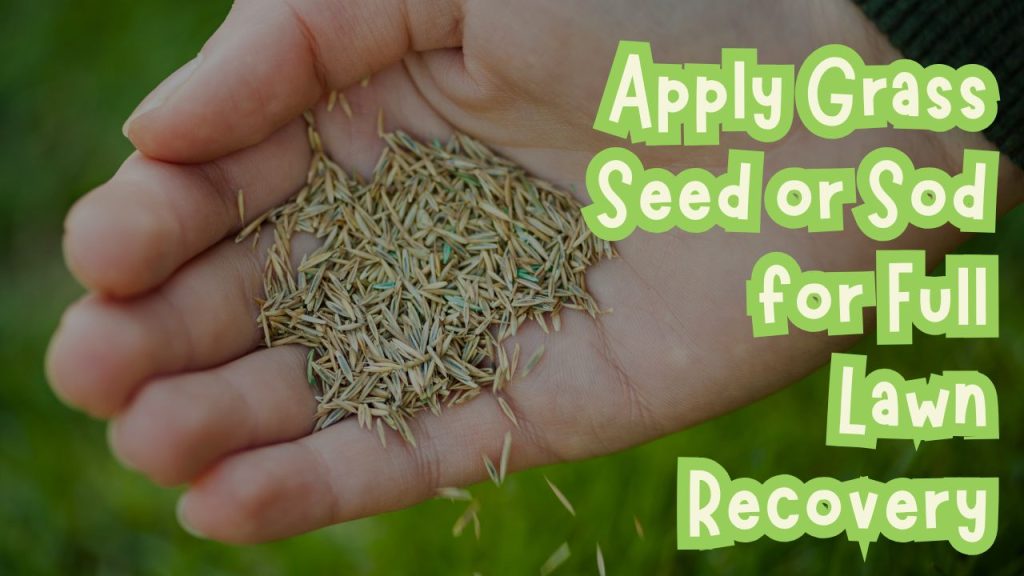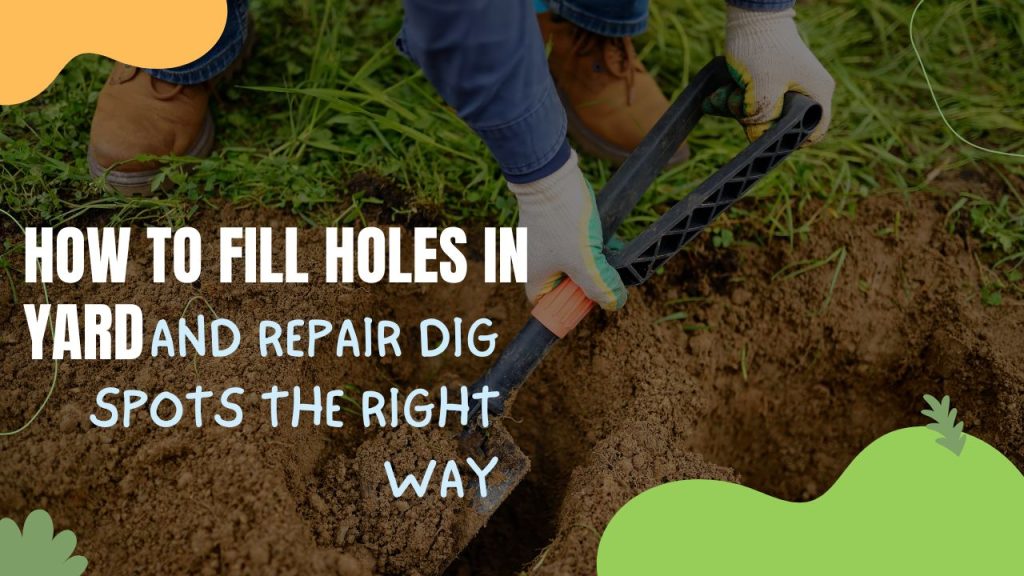Yard holes are more than an eyesore. They trip people, damage lawnmowers, and invite pests. Whether your dog’s been digging, kids have been playing rough, or a storm left behind damage, filling those gaps is easier than you think. And doing it right means your lawn can bounce back faster and stronger.
Let’s walk through the steps to fix holes in your yard and bring your grass back to life—without the frustration.
Identify the Type and Cause of the Hole
Before grabbing a shovel, figure out why the hole is there. Did animals dig it? Is it from foot traffic, erosion, buried debris, or an old tree stump?
Animal holes are often small, scattered, and may include tunnels or signs of burrowing. Sinkholes or erosion spots tend to be deeper and may form after heavy rain. Dog dig spots are usually fresh, uneven, and found near fences, shaded areas, or flower beds.
Knowing the cause helps you prevent the problem from happening again. If the culprit is still around—say a curious pet or a visiting raccoon—taking steps to deter them is key.
Dive Deeper : Mushrooms In Lawn: Causes, Risks, and How to Manage Them
Mow and Clean the Area for Easier Repair
Short grass makes repair easier. Mow the area around the hole so you can see the full scope of the damage. Remove leaves, sticks, and loose turf. You’ll need a clear view of the bare or sunken patch.
If the hole is large or oddly shaped, mark the edges with small flags or spray paint. This helps you keep the repair neat and within bounds. It’s also useful if you’re working over multiple days. Don’t skip this step. A clean, visible space makes every other step smoother and more effective.

Remove Loose Soil, Rocks, and Debris
Don’t just pile soil on top of the hole and hope for the best. First, scoop out loose dirt, pebbles, dead roots, or thatch. If the ground is uneven, use a rake or garden fork to loosen and even it out.
This might seem like extra work, but it pays off. A clean base helps new soil settle better and supports grass growth. It also keeps weeds from taking over your patch job. If the area is compacted—say from foot traffic—break it up a little so fresh soil and roots can go deeper.
Fill the Hole with Quality Soil and Compact It
Use a good mix of topsoil and compost. This blend supports grass growth, holds moisture, and encourages healthy roots.
Shovel the soil mix into the hole a few inches at a time. After each layer, press it down gently. You can use your foot, a tamper tool, or the back of a rake.
Keep adding and pressing the soil until the spot is level—or even slightly higher than—the surrounding yard. Soil tends to settle after watering, so don’t be afraid to overfill just a bit. A well-packed base ensures your fix stays level and lasts longer.

Apply Grass Seed or Sod for Full Lawn Recovery
If you’re using seed, choose a type that matches your current lawn. For shady yards, get shade-tolerant seed. For sunny areas, regular turf seed works fine.
Sprinkle seed evenly over the repaired area. Then lightly rake the topsoil to mix it in. Don’t bury the seed too deep—just enough to keep it in place.
If you’re laying sod, cut a piece to fit the hole snugly. Press it down firmly to remove air pockets and help it root faster. Either way, press the surface with your foot or a lawn roller. Good contact with the soil is key for new growth.
Use Mulch and Water Properly to Help Grass Grow
For seeded areas, cover the patch with a thin layer of straw mulch. This helps hold moisture, deters birds, and protects the seed from wind. Water the area right after seeding or laying sod. Keep the soil damp (not soaking) for the first week or two. Seeded patches need light watering once or twice daily. Sod needs less frequent but deeper soaking.
Avoid walking on the repaired spot for at least two weeks. That gives the grass time to root and strengthens the area before regular use. You can also add a little starter fertilizer—just make sure it’s designed for new lawns.
Dive Deeper : When to Fertilize Lawn: A Simple Guide for Healthy Grass
Conclusion
Fixing holes in your yard isn’t hard, but it does take a little care and patience. Identify the cause, clean the space, fill it with the right soil, and follow up with proper lawn care.
With the right approach, your patch will blend into the rest of your lawn in no time. A few simple tools, quality soil, and consistent watering can make all the difference. Give your yard a fresh start—it deserves it.

